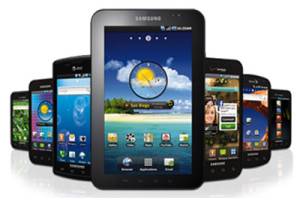The Samsung Galaxy S outsold the Apple iPhone in Japan during Q1 2011, and helped place Samsung in the ranks of the top four handset vendors of Japan for the first time. This is part of a bigger trend: Android smartphones are now outselling iOS smartphones in Japan, according to Strategy Analytics.
Japan has always been a difficult market to crack for foreign vendors. All previous attempts failed as the Japanese chose to buy phones from their own local companies. With smartphones, however, this trend has been broken. First, Apple shook up the market with the iPhone, and now, for the first time, Samsung is shipping more handsets than most local vendors, including NEC, Casio, and Kyocera.
"Strategy Analytics believes that the healthy demand for the Android-powered Galaxy S at NTT DoCoMo drove Samsung growth in Japan," Neil Mawston, Director of Strategy Analytics, said in a statement. "Samsung is the main player behind surging Android smartphone sales, followed by Sharp. Japan had always had a unique competitive landscape, but is now looking more and more like any other advanced smartphone market in the world as Android has flown by iOS in just three quarters."
This is a huge success for Samsung as it continues to ride the Android explosion. It's worth emphasizing that we're talking about the first Galaxy smartphone: its successor is already on its way. The Samsung Galaxy S II had over 3 million preorders as of last month. Enthusiasts might also want to know that it's been successfully overclocked to 1.5GHz.
The Galaxy S II runs Android 2.3 (codenamed Gingerbread) and is powered by a dual-core 1.2GHz processor. It is the first handset to offer Samsung's Super AMOLED Plus screen technology (4.27-inch display, 800x480 resolution), and is the company's thinnest phone at 8.49mm, with a weight of just 116g. The device also features an 8MP primary camera with 1080p video capture, and a 2MP camera in the front, as well as integrated NFC support on some versions. It also has BlueTooth 3.0+HS and HSPA+ connectivity.
The device's new Live Panel allows you to aggregate web, social networking, and app content to a single customizable home screen. You'll be able to switch between three adjacent home screens by simply pressing and holding on the screen. The phone will come with four new content and entertainment hubs: music, games, e-reading, and social networking. For more information, read our review.
